Cygwin is a Unix-like environment for windows
It can be obtained from: www.cygwin.com
Below are notes on how to install and setup cygwin for access to group computers.
Download setup.exe from www.cygwin.com.
Run application from your local harddrive.
Chose next on first screen.
Select "Install from Internet" and click next.
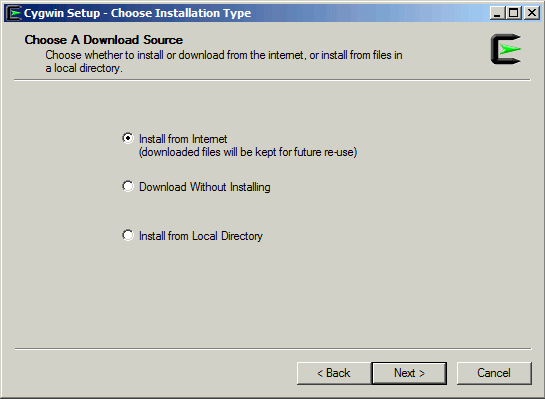
Enter preferred installation (Root) directory and click next.
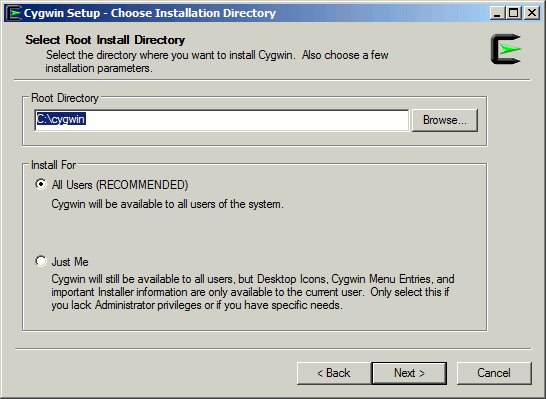
Enter a temporary installation directory and click next.
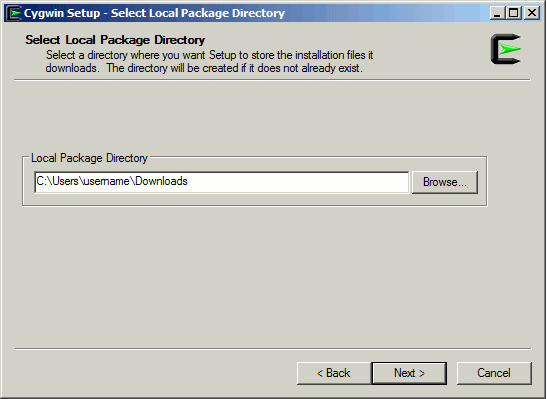
Select "Direct Connection" and click next.
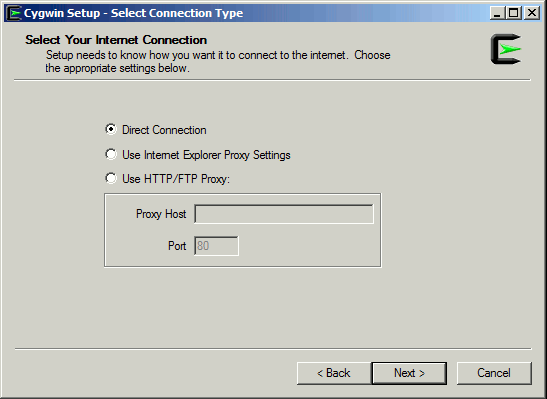
Select a download site and click next.
(Any site that you can connect to is fine. Some sites are more stable and/or faster than others. Try to pick one that works for you.)
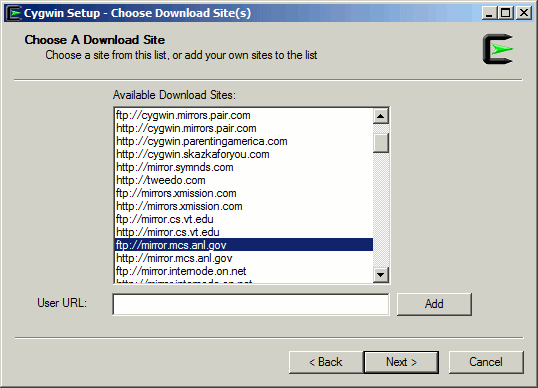
Select the packages you want to install and click next.
Packages you may want to install include:
opennssh
bc
python
keychain (for ssh key pairs)
gv
ghostscript
emacs
vi
grace
tcsh
gnu compilers
tetex
aspell
xfig
transfig
ImageMagic
gnuplot
rsync
xinit
(important for installing X-server)
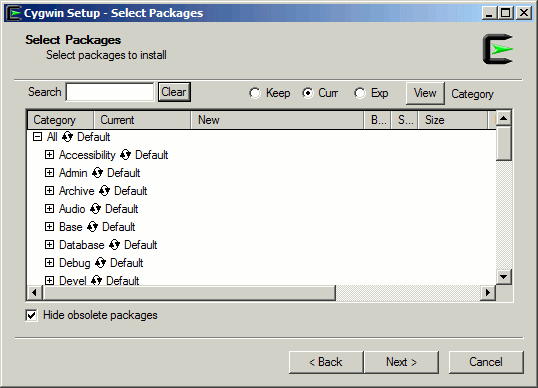
Please note sometimes you may get a download incomplete and the setup application will return to step 8. Simply select another server and continue the installation process.
Once the installation is complete, click Finish and continue with the Setup section.
DO NOT RESTART AT THIS TIME!
Setup Notes:
Setup Windows Environment Variables:
Open your System Control Panel:
Select [start]->Control Panel->System
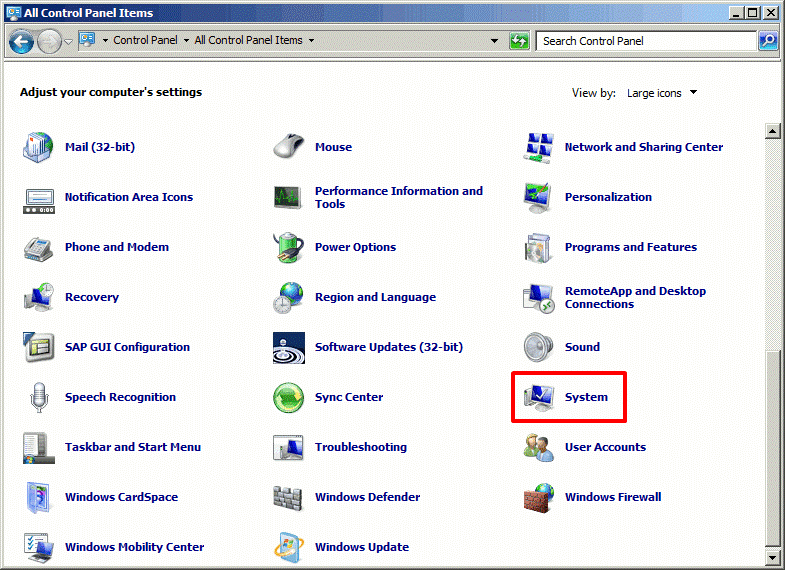
Click on "Advanced System Settings", then select "Environmental Variables" under the "Advanced" tab of the "System Properties" Control Panel.
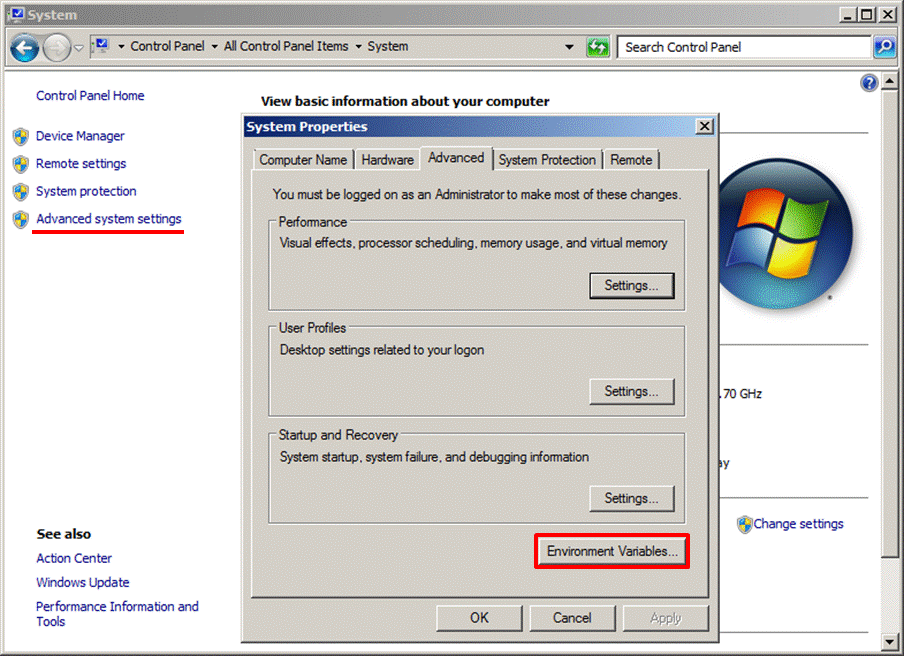
In the Environmental variables window select new under "Variables for User" window.
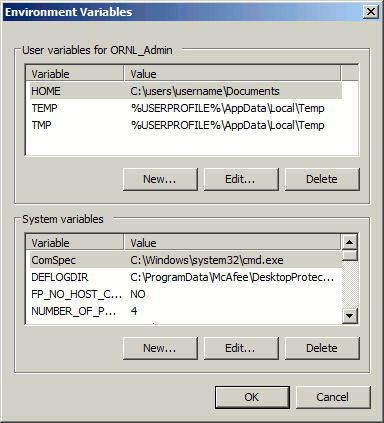
Edit "User Variable" as follows:
Variable name: HOME
Variable value: Path to where you want your home directory
e.g. C:\user\username\Documents
In the Environmental variables window select Path under "System Variables" window.
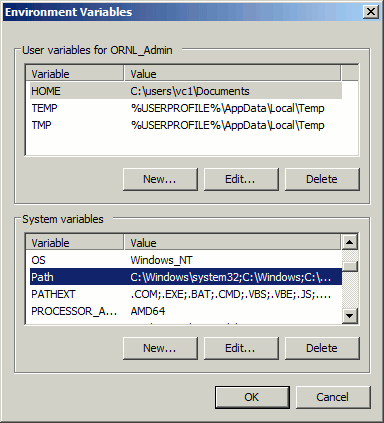
Edit "System variable" as follows:
Append "; C:\cygwin\bin" to Variable value: (semicolon is very important)
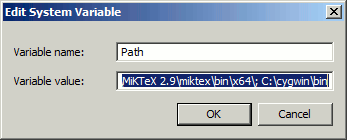
Select "Ok" to close both "Environmental Variables" and "System Properties" windows.
Creating link for starting X-windows:
Create a shortcut to C:\cygwin\bin\Run.exe (on your desktop is probably a good place to do this).
Right click on the shortcut and select properties.
Under Target in the Shortcut tab enter:
C:\cygwin\bin\run.exe /usr/bin/bash.exe -l -c /usr/bin/startxwin.exe
You may want to change the icon:
Select "Change Icon" and chose a preferred icon.
Select "Ok" to close the Properties dialog box.
To allow X-windows to start upon boot, place the your new shortcut in [Start]->[All Programs]->[Startup]<\ul>
Now is a good time to restart...
Setup and configuring cygwin files.
(Only necessary if your admin account differs from your user account) Create a new user and set a default user home directory other /home/username:
Using the terminal started by X-windows:
type: mkpasswd -c -p /cygdrive/c/Users/username/Documents >> /etc/passwd
edit /etc/passwd using your favorite editor. You will need to remove the extra username after Documents in the home path.
For easy use of the terminal create a startxterm.bat file in C:cygwin/bin. A reasonable xterm file looks like:
@echo off
SET DISPLAY=127.0.0.1:0.0
REM Startup an xterm, using bash as the shell.
%RUN% xterm -geometry 120x40 -sb -rightbar -e /bin/bash -l
Save the file and you are done!
Start X-windows using the shortcut (it may already be started if you placed the file in your startup directory and rebooted).
Use the startxterm.bat file to start a terminal. (You may want to create a shortcut to this for easy use.)
It can be obtained from: www.cygwin.com
Below are notes on how to install and setup cygwin for access to group computers.
Download setup.exe from www.cygwin.com.
Run application from your local harddrive.
Chose next on first screen.
Select "Install from Internet" and click next.

Enter preferred installation (Root) directory and click next.

Enter a temporary installation directory and click next.

Select "Direct Connection" and click next.

Select a download site and click next.
(Any site that you can connect to is fine. Some sites are more stable and/or faster than others. Try to pick one that works for you.)

Select the packages you want to install and click next.
Packages you may want to install include:
opennssh
bc
python
keychain (for ssh key pairs)
gv
ghostscript
emacs
vi
grace
tcsh
gnu compilers
tetex
aspell
xfig
transfig
ImageMagic
gnuplot
rsync
xinit
(important for installing X-server)

Please note sometimes you may get a download incomplete and the setup application will return to step 8. Simply select another server and continue the installation process.
Once the installation is complete, click Finish and continue with the Setup section.
DO NOT RESTART AT THIS TIME!
Setup Notes:
Setup Windows Environment Variables:
Open your System Control Panel:
Select [start]->Control Panel->System

Click on "Advanced System Settings", then select "Environmental Variables" under the "Advanced" tab of the "System Properties" Control Panel.

In the Environmental variables window select new under "Variables for User" window.

Edit "User Variable" as follows:
Variable name: HOME
Variable value: Path to where you want your home directory
e.g. C:\user\username\Documents
In the Environmental variables window select Path under "System Variables" window.

Edit "System variable" as follows:
Append "; C:\cygwin\bin" to Variable value: (semicolon is very important)

Select "Ok" to close both "Environmental Variables" and "System Properties" windows.
Creating link for starting X-windows:
Create a shortcut to C:\cygwin\bin\Run.exe (on your desktop is probably a good place to do this).
Right click on the shortcut and select properties.
Under Target in the Shortcut tab enter:
C:\cygwin\bin\run.exe /usr/bin/bash.exe -l -c /usr/bin/startxwin.exe
You may want to change the icon:
Select "Change Icon" and chose a preferred icon.
Select "Ok" to close the Properties dialog box.
To allow X-windows to start upon boot, place the your new shortcut in [Start]->[All Programs]->[Startup]<\ul>
Now is a good time to restart...
Setup and configuring cygwin files.
(Only necessary if your admin account differs from your user account) Create a new user and set a default user home directory other /home/username:
Using the terminal started by X-windows:
type: mkpasswd -c -p /cygdrive/c/Users/username/Documents >> /etc/passwd
edit /etc/passwd using your favorite editor. You will need to remove the extra username after Documents in the home path.
For easy use of the terminal create a startxterm.bat file in C:cygwin/bin. A reasonable xterm file looks like:
@echo off
SET DISPLAY=127.0.0.1:0.0
REM Startup an xterm, using bash as the shell.
%RUN% xterm -geometry 120x40 -sb -rightbar -e /bin/bash -l
Save the file and you are done!
Start X-windows using the shortcut (it may already be started if you placed the file in your startup directory and rebooted).
Use the startxterm.bat file to start a terminal. (You may want to create a shortcut to this for easy use.)
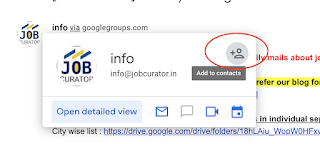

No comments:
Post a Comment